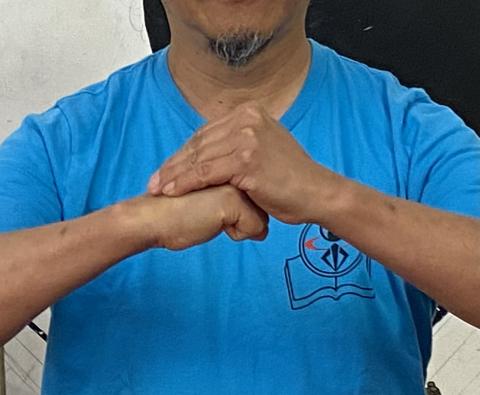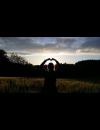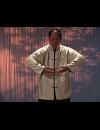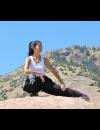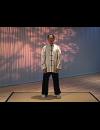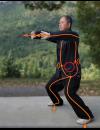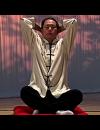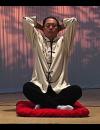The Importance of Belonging to the Wulin
June 17, 2024
YMAA Staff writer Gene Ching ruminates on the society and culture of martial artists known as the wǔlín. 6 Min Read
Why your teacher is not God - The infallibility illusion in traditional martial arts
December 18, 2023
It is easy to fall into the trap of seeing our martial arts masters as infallible or near-invincible in skill. However, this mindset is not just erroneous, but downright dangerous too. The following article will explain why.
Qi Demons and Kung Fu Exorcists
October 30, 2023
On the day before Halloween 2023, YMAA Staff Writer Gene Ching ruminates about demonic possession in Kung Fu and Qigong practice.
You Are Bioelectric
October 23, 2023
Your body’s matrix of fluid-filled tissue is a system capable of absorbing and donating electrons (qì) wherever they are needed, from the surface of our skin all the way into our DNA.
Qigong is Ancient Mind/Body Science
October 16, 2023
Ancient practitioners were mind/body scientists of the subtle body, working with their Qì to promote health, healing, and extraordinary vitality and longevity.
Qigong for Arthritis
-
April 30, 2018
I would like to discuss the attitude that you need to adopt in your practice. Quite frequently, people who are ill are reluctant to become involved in the healing process. This is especially true for arthritis patients. Both Western and Chinese physicians have had difficulty persuading them to become involved in regular exercise or qigong. The main reason for this reluctance is that the patients are afraid of pain, and therefore believe that these kinds of exercise are harmful. In order to conquer this obstacle to your healing, you must understand the theory of healing and the reason for practicing. Only then will you have the confidence necessary for continued practice. Remember, a physician may have an excellent prescription for your illness, but if you don’t take the medicine, it won’t do you any good.
An Introduction to Qi and Qigong
-
January 29, 2018
If you study the history of the human race, you will see that a large part of this history has been taken up with war, conquest, killing, and the struggle for power. We have tended to worship as heroes those who could conquer and rule other countries, and we have wrongly educated each new generation to glorify killing and slavery, and to worship power. There have been only relatively short periods when humankind has not been at war, when people could live their lives in peace and tranquility; but it was during these times that people created art, wrote poems, and sought ways to live longer and happier lives.
Common Sensations Experienced in Still Meditation
-
January 15, 2018
When you practice still meditation, regulating your body, breathing, and mind, you enter into deep meditation. Qi readjusts and balances itself, reaching even the smallest place in your body. You have feelings and visions, which cannot be experienced when you are not in meditation.
Chinese or Western Medicine for Arthritis Sufferers?
-
October 30, 2017
Arthritis has afflicted humankind for as far back as we can trace. In all races, the young as well as the old have experienced the pain of arthritis. The condition can also have a disastrous effect on the sufferer’s peace of mind. Despite the great advances made in many fields of science, Western medicine today is still unable to cure many forms of arthritis.
How Do the Chinese Treat Back Pain?
-
September 27, 2017
Qigong is the study of qi. This means that qigong actually covers a very wide field of research and includes the study of the three general types of qi (heaven qi, earth qi, and human qi) and their interrelationships. However, because the Chinese have traditionally paid more attention to the study of human qi, which is concerned with health and longevity, the term “qigong” has often been misunderstood and misused to mean only the study of human qi.
Ten Tips for a Stress-Free Lifestyle
-
July 10, 2017
Depression is a major health hazard affecting many people's lives all around the world. Stress is a large part of depression. In the United States, about fifty-four million people experience some type of mental disorder each year. That is about one in five Americans. There are certain things we should pay attention to in order to have a stress-free lifestyle, which can greatly contribute to reducing or eliminating depression.
Radiant Lotus Qigong for Women
-
March 6, 2017
Throughout China, Japan, India, Egypt and other Eastern countries, the beautiful lotus flower is famed for its ability to grow in muddy, stagnant waters, absorbing what is useful and releasing what no longer supports its optimum health. Amidst challenging conditions, it breaks through the darkness to bring light, beauty, strength and grace to our world.
What is Qi and What is Qigong?
-
March 14, 2016
To understand taiji ball qigong, first you must know what qi and qigong are. Only then will you be able to comprehend how and why qigong is able to bring you health, longevity, and even spiritual enlightenment.
Moving Taiji Qigong
-
May 15, 2015
Moving taiji qigong includes both stationary and walking exercises. The following discusses the first of three stationary sets with exercises. The first one, which I call the “primary set,” is generally used for taijiquan beginners. I call the second set the “coiling set,” since it emphasizes coiling movements. The third set is the “rocking set.”
Nèigōng: Martial Qìgōng for Internal Power
-
December 8, 2014
The traditional Chinese art of Nèi-gōng is the key to developing more qì (energy) and maximizing your circulation. Continual practice of Nèigōng is a process of internal alchemy resulting in a refinement and transmutation of the "Three Treasures" or Sān Bǎo (三寶).
Regulating the Breath (Tiao Xi)
-
November 24, 2014
Regulating breathing means to regulate your breath until it is calm, smooth, and peaceful. Only when you have reached this point will you be able to make the breathing deep, slender, long, and soft, which is required for successful qigong practice.
Acupuncture Points Verified with New Technology
-
September 8, 2014
Acupuncture is the art of stimulating points in the body to improve circulation and remove blockages, either as a general tonic or to promote the healing of specific ailments.
Action of the Five Building Blocks of Qi (Energy System)
-
August 25, 2014
In order to achieve a strong energetic system, we must fine-tune each of the five building blocks until fine-tuning is not necessary.
Still Sitting Meditation and Still Standing Meditation—Yin and Yang
-
March 3, 2014
As with all other forms of martial qigong, taiji qigong can be categorized into both yin and yang practices. The yin side of taiji qigong contains exercises that emphasize calmness without movement, and the yang side of taiji qigong has exercises that are more physically active.
Healing with Qigong and Tai Chi
-
February 10, 2014
Ramel Rones was accepted by Dr. Yang as a disciple in 1983 due to his exceptional learning capability and humble dedication to the training. After years of gold award-winning martial arts demonstrations and competitions across the United States and China, Ramel now works as a Scientific Consultant of Mind/Body Therapies at the Dana Farber Cancer Institute and at Harvard and Tufts Medical Schools in Boston, Mass.
Nei Dan Sitting Meditation
-
January 13, 2014
If you are a qigong beginner, I recommend that you do not start this training on your own. Nei dan qigong is hard to understand and experience, especially for qigong beginners. If you do not understand the training theory and practice incorrectly, you may injure yourself. Wai dan standing meditation is generally much safer.
Meditation Techniques at YMAA Retreat Center - Part 2
-
December 15, 2013
Two hard, consecutive chimes signal the start of the second segment. In this segment, we use a breathing technique called embryonic breathing. Embryonic breathing gets its name because it is based on the actions of pre-birth breathing. An embryo absorbs nutrients from its mother with a pumping action of the abdomen, connected via the umbilical cord. We mimic this method with reverse abdominal breathing, alongside movement with the perineum and lower back.
Meditation Techniques at YMAA Retreat Center - Part 1
-
December 9, 2013
For a disciple at the YMAA Retreat Center, every morning begins the same way. Before dawn, we quietly rise from our beds and make our way outside, filing one by one into our little gazebo, which overlooks the mountains. Each disciple grabs a mat or a cushion and faces one of two directions: Either east, toward the rising sun, or toward the center of the bagua diagram emblazoned on the floor.
Wai Dan Standing Still Meditation
-
December 1, 2013
Over the years, various taijiquan and qigong masters have created many postures for standing still meditation. Generally speaking, they are safer to practice than the small circulation exercises because they build up the qi locally in parts of the body, rather than directly in the qi vessels.
Five Categories of Qigong Exercises
-
October 21, 2013
It is very important to keep the qi or internal energy circulating smoothly in your body. Many different kinds of qigong exercises have been created to achieve this, but they can generally be categorized into five groups according to the main purpose of the training.
